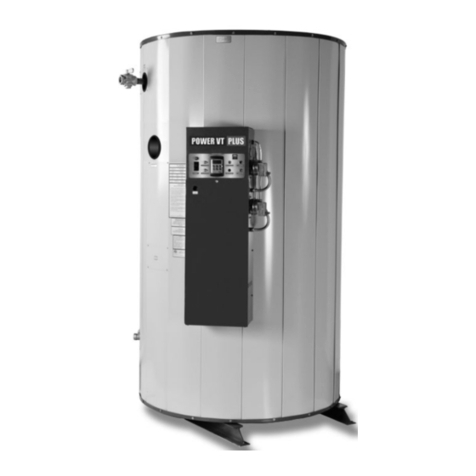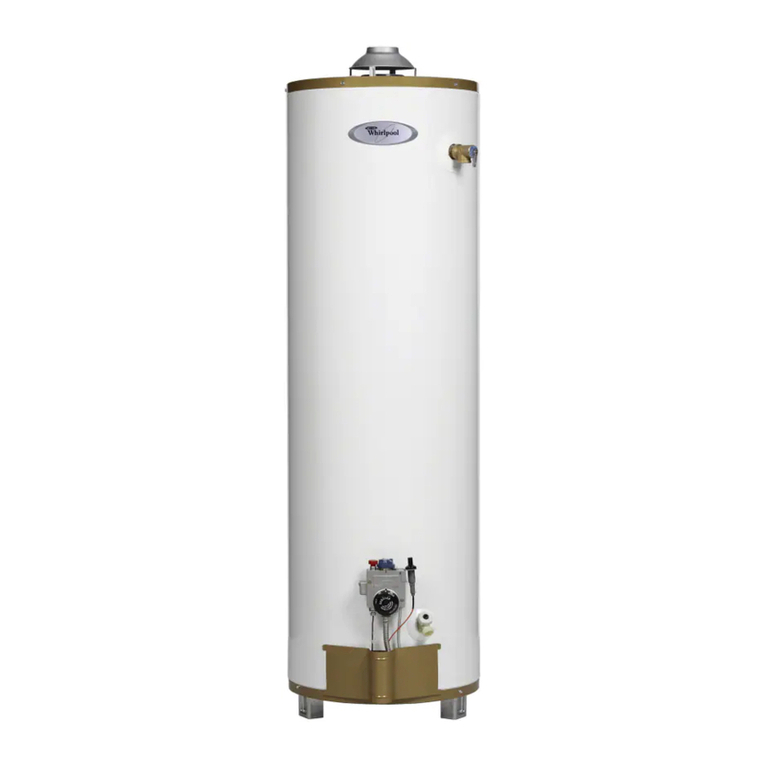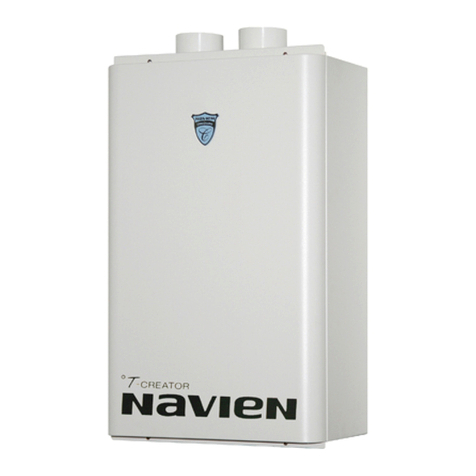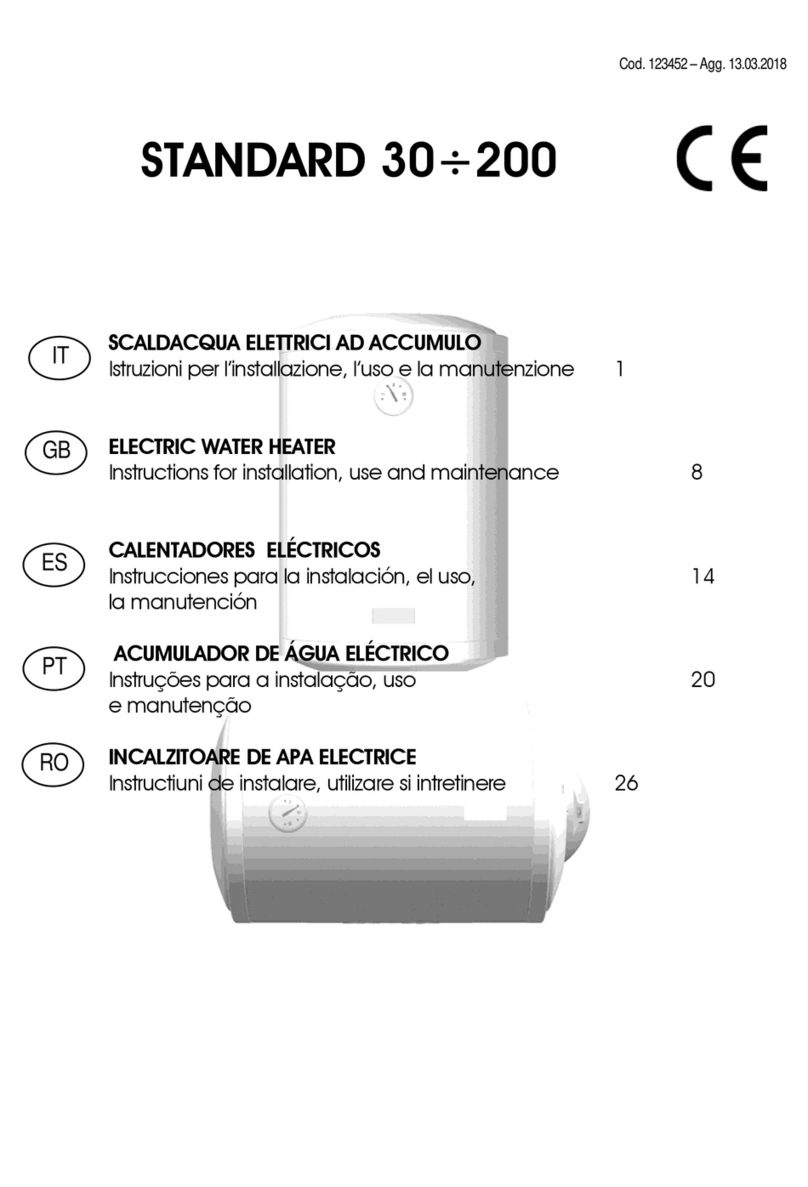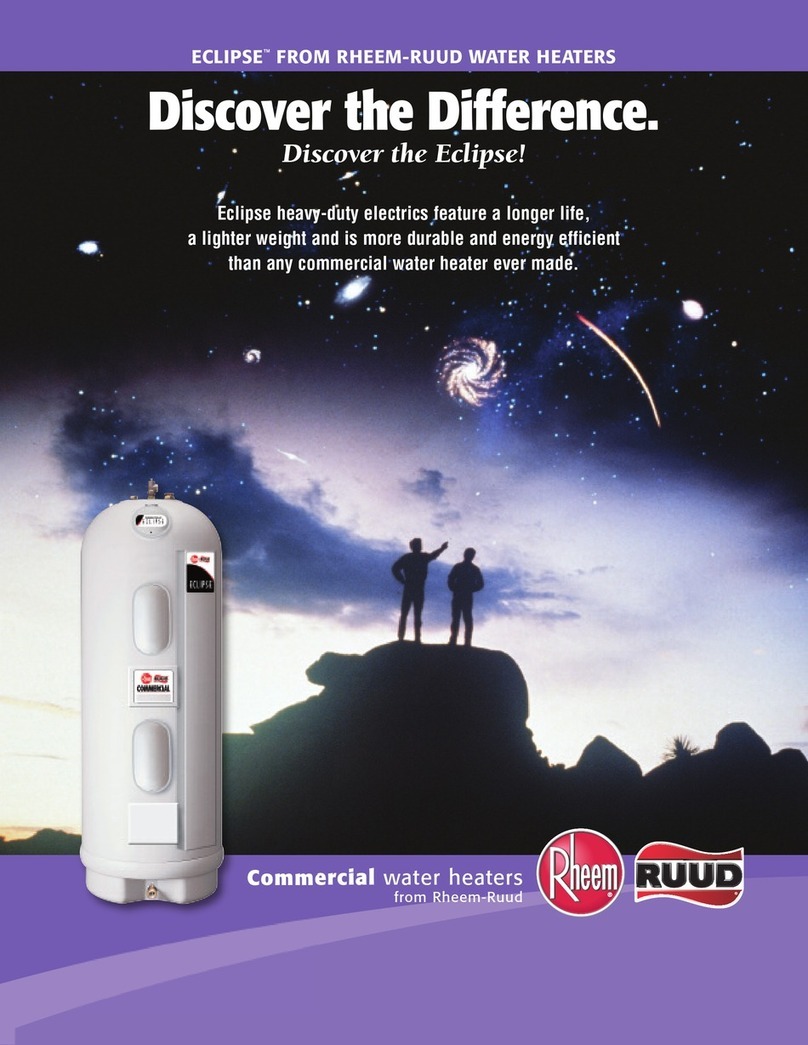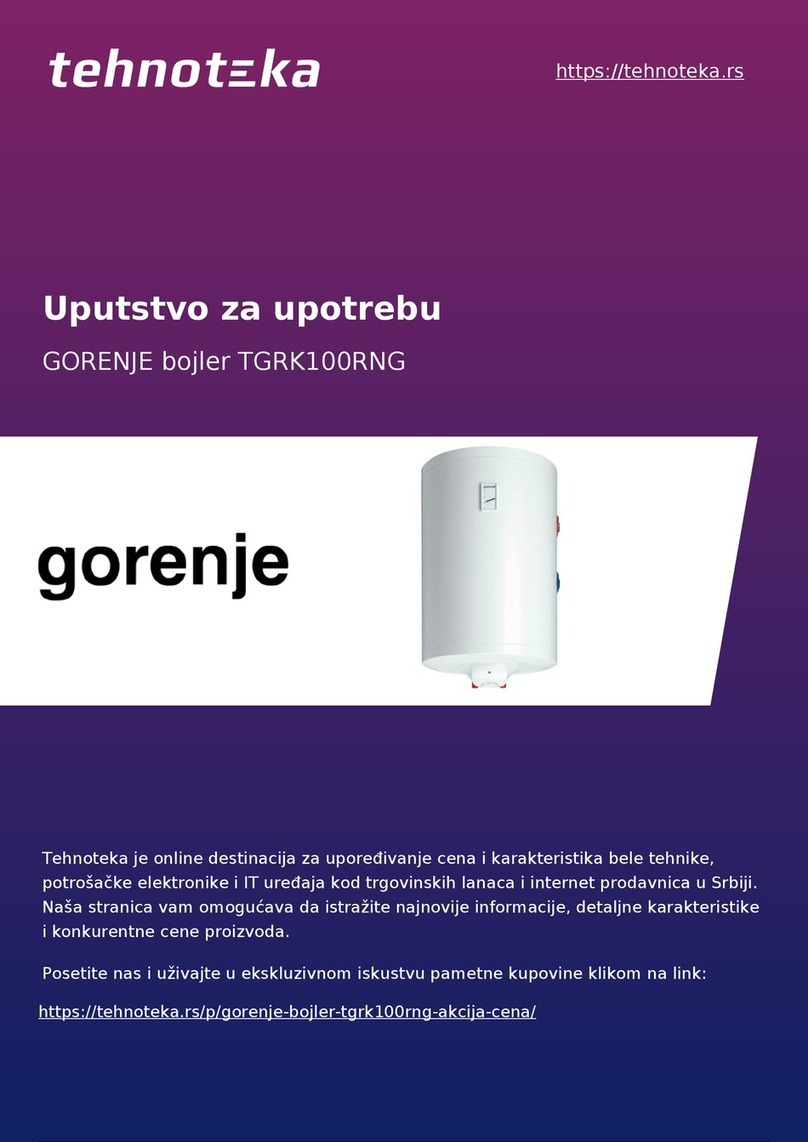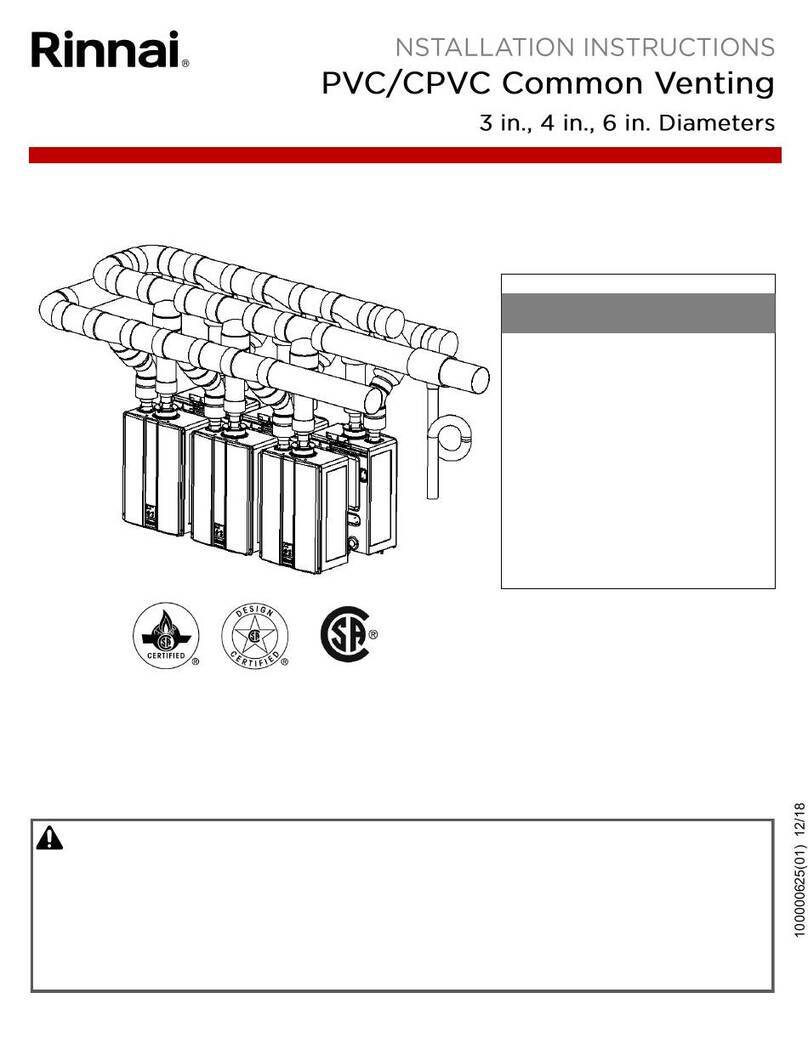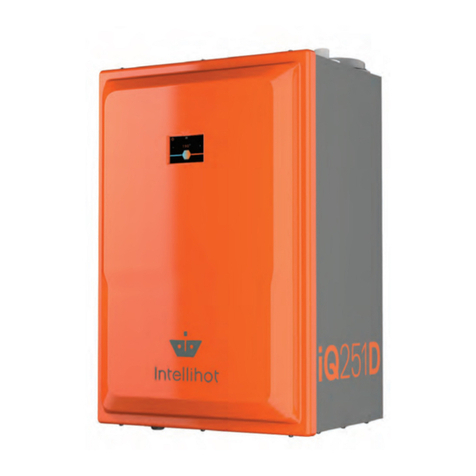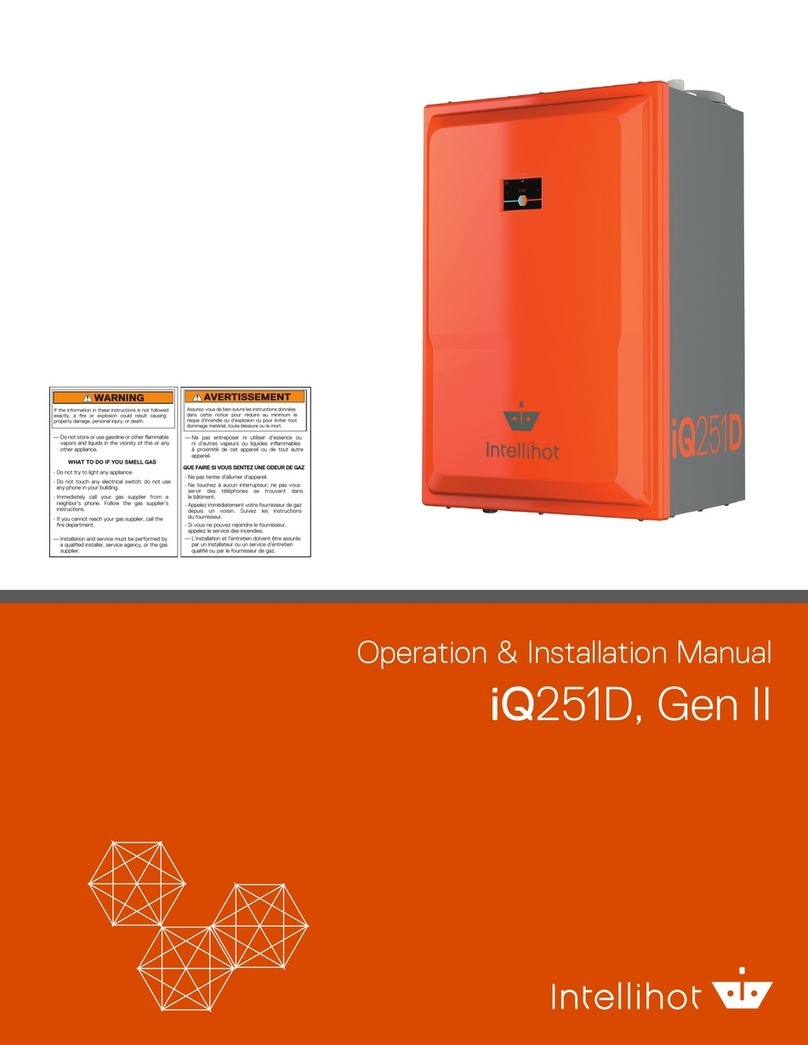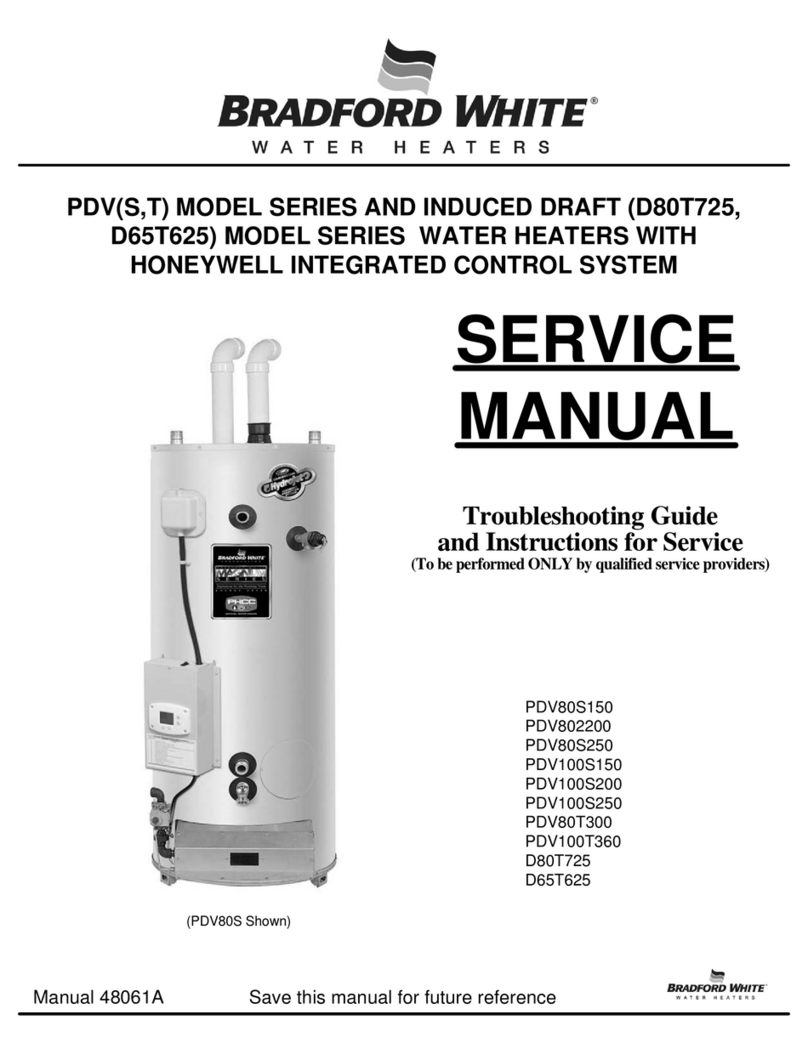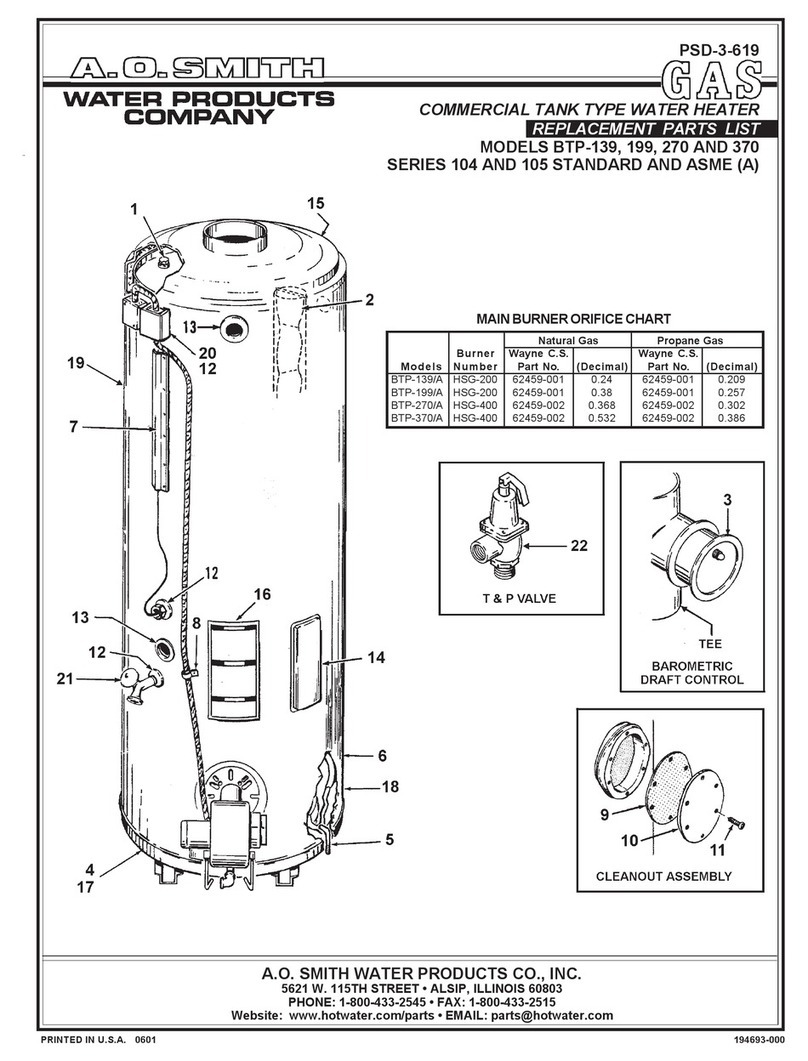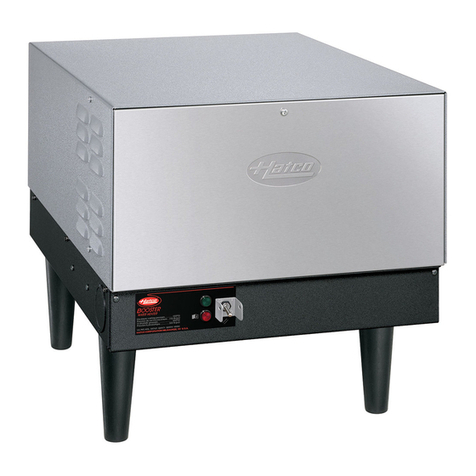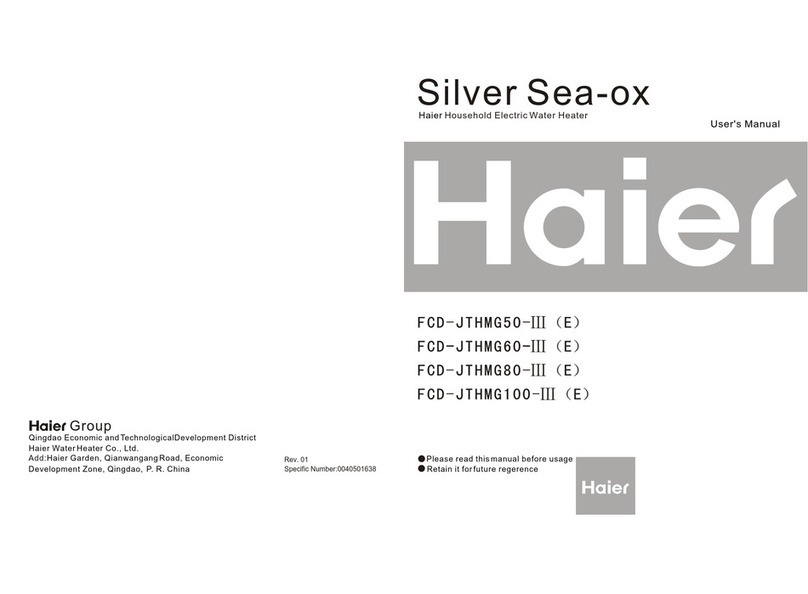
iQ251 Gas Connection 16
May 2018 - Revision 01
6.9 Gas Pipe Sizing Tables
This information is for reference only. Refer to gas pipe manufacturer specifications for actual delivery capacity. Contact the
local gas supplier for actual BTU/ft3rating. This data has been copied from the National Fire Protection Association Article 54
(NFPA 54).
Pipe Sizes and BTU/h Capacity (NATURAL GAS). Use this table for static gas pressure
LESS THAN 5” W.C.
Length
including
fittings (feet)
3⁄4" 1" 1-1/4" 1-1/2" 2" 2-1/2" 3" 4"
10 360,000 678,000 1,390,000 2,090,000 4,020,000 6,400,000 11,300,000 23,100,000
20 247,000 466,000 957,000 1,430,000 2,760,000 4,400,000 7,780,000 15,900,000
30 199,000 374,000 768,000 1,150,000 2,220,000 3,530,000 6,250,000 12,700,000
40 - 320,000 657,000 985,000 1,900,000 3,020,000 5,350,000 10,900,000
50 - 284,000 583,000 873,000 1,680,000 2,680,000 4,740,000 9,660,000
60 - 257,000 528,000 791,000 1,520,000 2,430,000 4,290,000 8,760,000
70 - 237,000 486,000 728,000 1,400,000 2,230,000 3,950,000 8,050,000
80 - 220,000 452,000 677,000 1,300,000 2,080,000 3,670,000 7,490,000
90 - 207,000 424,000 635,000 1,220,000 1,950,000 3,450,000 7,030,000
100 - - 400,000 600,000 1,160,000 1,840,000 3,260,000 6,640,000
125 - - 355,000 532,000 1,020,000 1,630,000 2,890,000 5,890,000
150 - - 322,000 482,000 928,000 1,480,000 2,610,000 5,330,000
175 - - 296,000 443,000 854,000 1,360,000 2,410,000 4,910,000
200 - - 275,000 412,000 794,000 1,270,000 2,240,000 4,560,000
Note: BTU/h capacities are based on specific gravity of 0.6, pressure drop of 0.5” W.C.
Pipe Sizes and BTU/h Capacity (NATURAL GAS). Use this table for static gas pressure
GREATER THAN 5” W.C.
Length
including
fittings (feet)
1/2" 3⁄4" 1" 1-1/4" 1-1/2" 2" 2-1/2" 3" 4"
10 404,000 949,000 1,787,000 3,669,000 5,497,000 10,588,000 16,875,000 29,832,000 43,678,000
20 286,000 652,000 1,228,000 2,522,000 3,778,000 7,277,000 11,598,000 20,503,000 30,020,000
30 233,000 524,000 986,000 2,025,000 3,034,000 5,844,000 9,314,000 16,465,000 24,107,000
40 202,000 448,000 844,000 1,733,000 2,597,000 5,001,000 7,971,000 14,092,000 20,632,000
50 - 397,000 748,000 1,536,000 2,302,000 4,433,000 7,065,000 12,489,000 18,286,000
60 - 360,000 678,000 1,392,000 2,085,000 4,016,000 6,401,000 11,316,000 16,569,000
70 - 331,000 624,000 1,280,000 1,919,000 3,695,000 5,889,000 10,411,000 15,243,000
80 - 308,000 580,000 1,191,000 1,785,000 3,437,000 5,479,000 9,685,000 14,181,000
90 - 289,000 544,000 1,118,000 1,675,000 3,225,000 5,140,000 9,087,000 13,305,000
100 - 273,000 514,000 1,056,000 1,582,000 3,046,000 4,856,000 8,584,000 12,568,000
125 - 242,000 456,000 936,000 1,402,000 2,700,000 4,303,000 7,608,000 11,139,000
150 - 219,000 413,000 848,000 1,270,000 2,446,000 3,899,000 6,893,000 10,093,000
175 - 202,000 380,000 780,000 1,169,000 2,251,000 3,587,000 6,342,000 9,285,000
200 - - 353,000 726,000 1,087,000 2,094,000 3,337,000 5,900,000 8,638,000
Note: For 1/2” pipe BTU/h capacities are based on specific gravity of 0.6, pressure drop of 4.6” W.C. For all other pipe sizes, capacities are based on
specific gravity of 0.6, pressure drop of 3.0” W.C.




















